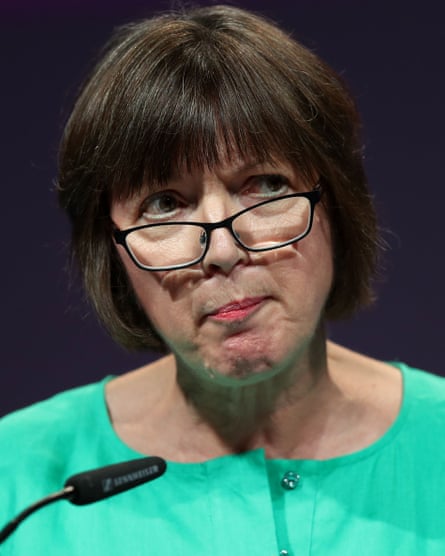Britain’s gender pay gap among full-time workers has fallen to the lowest level since records began 20 years ago, but the TUC warned the UK was still “decades away” from equal pay for men and women.
The gap between what male and female workers earn – based on median hourly earnings – fell to 9.1% in April, from 9.4% a year earlier, according to the annual snapshot of hours and earnings from the Office for National Statistics. It was 17.4% in 1997 when the ONS first collected the data.
But Frances O’Grady, general secretary of the TUC, said progress was too slow and urged the government to put more pressure on firms to close the gap.
“The full-time gender pay gap has inched a bit smaller. But there is still a chasm between men and women’s earnings. At this rate it’ll take decades for women to get paid the same as men,” she said.
“The government needs to crank up the pressure on employers. Companies shouldn’t just be made to publish their gender pay gaps. They should be forced to explain how they’ll close them. And those bosses who flout the law should be fined.”
Men working full-time earned an average of £592 a week in April compared with £494 for women. At 34%, the occupations with the biggest pay gap among full-time workers were town planners, musicians, and assemblers of vehicles and metal goods.

Real pay fell for the first time since 2014, according to the ONS survey, as prices rose at a faster pace than wages. Weekly earnings adjusted for inflation were 0.4% lower in April compared with a year earlier.
Lack of pay growth has left workers £38 a week worse off than they were before the financial crash, O’Grady said.
“Most families still haven’t recovered from the financial crash, yet their pay packets are now taking another hammering. It’s leaving millions of working people facing hardship and getting deeper into debt,” she said.
It is the latest evidence of the incomes squeeze suffered by UK households in the aftermath of the Brexit vote, which triggered a sharp fall in the value of the pound, pushing up the costs of goods imported from abroad and feeding through to higher UK inflation and shop prices.
Inflation was 2.6% in April, compared with just 0.7% in April 2016. It has since risen to 3% in September, the highest in almost five and a half years.
Carole Easton, chief executive of Young Women’s Trust, said young people were being hit hard by the fall in real wages.
“With wages falling and interest rates set to rise, young people – many of whom are not earning enough to cover the basics and are falling into debt – are at the sharp end,” she said.
“It’s even harder for young women, who still face a significant gender pay gap. At the current rate of progress, the pay gap will still exist by the time today’s young women are retired.”
Average gross weekly earnings for full-time workers, before adjusting for inflation, were £550 in April, up 2.2% from £539 in 2016. Pay rose 2.8% to £532 a week for private-sectors workers, and 0.9% to £599 for those working in the public sector.

Comments (…)
Sign in or create your Guardian account to join the discussion